Axolotl
Things You Need to Know Before You Get a 40 Gallon Fish Tank
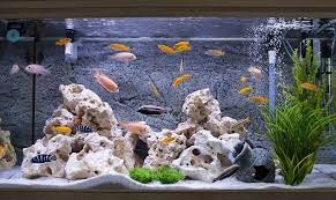
In this article, we will take a look at a few things you need to know before you get a 40 gallon fish tank. These things include how to choose a tank, overstocking your tank, and the cost of running it.
Biological filtration is most important for a 40 gallon fish tank
A biological filter is an aquarium filter that uses bacteria and other living organisms to remove contaminants from the water. This type of filtration is important to keep the water clean and safe. It is also helpful in removing unpleasant odors and particulates from the water.
There are several different types of filters. Some of them are designed to work on a biological and mechanical basis. Others are made to remove chemical waste. Each works to remove specific dissolved materials from the water.
Biological filtration is the most important of all aquarium filtration techniques. The bacteria in the filter help convert harmful toxins into less toxic substances. Nitrifying bacteria are beneficial to fish. They break down ammonia into nitrite. These bacteria are needed to complete the nitrogen cycle.
Biological filtration works on all aquarium surfaces. The best surface is one that has good water flow. If the water flow is poor, the bacteria will not be able to grow and your tank will not be as healthy.
Overstocking a 40 gallon fish tank
When you are stocking your 40 gallon fish tank, you have to consider a few things. Firstly, you need to determine how many fish will fit. Secondly, you need to take into consideration the quality of the water. Thirdly, you need to keep track of your fish’s health. Finally, you need to make sure that the fish have the space they need to live.
One thing to bear in mind is the size of your filter. You should choose a filter that is rated for the size of your tank. For instance, a 5-6 gallon filter is not enough to handle a 40 gallon aquarium.
Another thing to consider is how much waste your fish will produce. This is important because more waste pollutes your water more quickly.
Adding more fish to your fish tank will also mean adding more ammonia to the equation. A good filter will keep ammonia at bay. The trick is to keep your ammonia levels below 40 ppm.
Choosing the right tank
If you are a newbie to the hobby of keeping fish, a 40 gallon aquarium is a great place to start. It is large enough to hold many different species, and it is also relatively inexpensive. But before you go out and buy your first aquarium, there are a few things you should know.
The main thing to know is that you will need to choose between a glass or acrylic tank. Acrylic will be more expensive, but it is scratch resistant. However, a glass tank can crack in the case of extreme heat.
In addition to the size, you will need to consider the number of fish you want to keep in your 40 gallon aquarium. Larger sized fish will require more swimming space. There are a number of smaller sized fish that are suitable for this type of tank.
The filtration system is also a big factor. You should find a filter that can turn over 180 to 200 gallons of water per hour. Also, the filter should be able to cycle the water at least four times a day.
Cost of running a 40 gallon fish tank
If you are thinking about starting an aquarium, you may be wondering how much it costs to run a 40 gallon fish tank. The cost of running a fish tank will depend on the equipment you buy, the stocking of the tank, and your personal preferences.
For example, if you want to keep a tank with a few mid-size fish, it will cost you about $15 per month. However, it can get a bit pricey if you decide to add saltwater fish, which require more equipment.
You will also need to think about your maintenance routine. Depending on the size of your tank, this could include cleaning the filter and changing out the filter media, as well as vacuuming the sand bed.
Lastly, you’ll need to consider your lighting. A fish tank is usually an ecosystem, which means that you will need to provide safe habitat for your fish. This includes live rock and dry rock for corals.
Axolotl
Understanding the Leopard Gecko as a Pet: A Comprehensive Guide
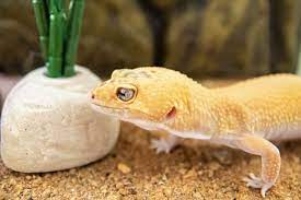
Introduction
Leopard geckos are one of the most popular pet reptiles in the world. They are small, gentle, and easy to care for, making them ideal pets for both experienced reptile owners and first-time pet owners. However, despite their popularity, there is still a lot of misinformation and misconceptions about these fascinating creatures. In this article, we will take a closer look at the leopard gecko, exploring everything you need to know about their natural habitat, care requirements, and behavior.
Natural Habitat
Leopard geckos are native to the arid and semi-arid regions of South Asia, including Afghanistan, Iran, and Pakistan. In their natural habitat, they live in rocky outcroppings and burrow in the soil to escape from the heat. They are nocturnal creatures and are most active during the evening and night, hunting for insects and other small prey.
Care Requirements
When it comes to caring for your leopard gecko, there are a few key things to keep in mind. First and foremost, you need to provide them with a suitable habitat. This includes a spacious terrarium with a substrate for digging and hiding, a basking spot for warming up, and a water dish for drinking and soaking. Additionally, you will need to provide them with a healthy and varied diet, consisting of live insects and occasional supplements of fruits and vegetables.
Behavior
Leopard geckos are relatively docile and easy-going creatures, which makes them great pets for families with children. They are not aggressive and do not bite, making them ideal pets for handling. They are also relatively independent, which means they do not require a lot of attention or interaction, making them ideal pets for busy owners. However, they do need to be handled regularly to maintain their trust and confidence, and to avoid stress and anxiety.
Health
Leopard geckos are generally hardy and healthy creatures, but like all reptiles, they are susceptible to certain health problems. Some of the most common health issues include skin infections, respiratory infections, and parasite infestations. To keep your leopard gecko healthy, it is important to provide them with a clean and hygienic habitat, a balanced diet, and to regularly monitor their health and seek veterinary care if necessary.
Breeding
Breeding leopard geckos can be a rewarding experience, but it is also important to be well-informed about the process. Female leopard geckos can lay up to two clutches of eggs each year, and the eggs will hatch in around 60 to 90 days. During this time, the eggs need to be kept at the right temperature and humidity to ensure proper development, and the hatchlings will need to be provided with a suitable habitat and diet.
Common Myths
Despite their popularity, there are still many myths and misconceptions about leopard geckos. Some people believe that leopard geckos are difficult to care for, or that they are aggressive and bite. However, these myths are simply not true, and leopard geckos are actually quite gentle and easy to care for. It is important to dispel these myths and educate people about the true nature of these fascinating creatures.
Conclusion
Leopard geckos are a great pet for reptile enthusiasts and first-time pet owners alike. With the right care and attention, they can live long and healthy lives, and provide their owners with years of joy and companionship. Whether you are an experienced reptile owner or just starting out, a leopard gecko is a great choice for your next pet.
Axolotl
Moss Ball Petsmart: A Comprehensive Guide
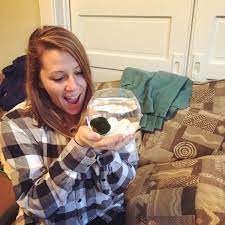
A moss ball, also known as a Marimo ball, is a unique and fascinating addition to any aquarium. These spherical clusters of green algae have become increasingly popular as pets and are now widely available at pet stores such as PetSmart. In this article, we will explore everything you need to know about moss balls and how to properly care for them in your own aquarium.
What is a Moss Ball?
A moss ball is a species of green algae that grows into a ball-like shape. The scientific name for this algae is Aegagropila linnaei and it is native to freshwater lakes in Japan, Iceland, and Europe. These balls of moss are soft and velvety to the touch, and they are often used as a natural filter in aquariums. They absorb impurities from the water and provide a habitat for beneficial bacteria, helping to maintain a healthy and balanced ecosystem in your aquarium.
Benefits of Having a Moss Ball in Your Aquarium
There are several benefits to having a moss ball in your aquarium, including:
Natural Filter
As mentioned, moss balls act as a natural filter, absorbing impurities from the water. This helps to keep your aquarium clean and healthy, which is beneficial for all of your aquatic pets.
Low Maintenance
Moss balls are extremely low maintenance. They do not need to be fertilized, and they do not require special lighting or equipment. Simply place them in your aquarium and watch as they grow and thrive.
Aesthetically Pleasing
In addition to their practical benefits, moss balls are also aesthetically pleasing. Their bright green color adds a pop of color to your aquarium and their unique shape adds interest and texture to your underwater landscape.
How to Care for Your Moss Ball
Caring for your moss ball is simple and straightforward. Here are the key things you need to know:
Lighting
Moss balls do not require special lighting, but they do need some light to thrive. Place your moss ball near a light source, but not directly in the light, as this can cause it to dry out.
Water Quality
Moss balls are sensitive to water quality and they will not thrive in water that is too dirty or contaminated. Make sure to regularly clean your aquarium and change the water as needed.
Temperature
Moss balls prefer cooler water temperatures, between 60-70°F. If the water in your aquarium is too warm, it can cause your moss ball to break apart.
Placement
Moss balls do not have roots, so they can be placed anywhere in your aquarium. However, they should not be placed near any strong currents or filtration systems, as this can damage the delicate algae.
Propagation
Moss balls can easily be propagated by gently pulling apart the algae and separating it into smaller balls. This allows you to create multiple moss balls from a single one, making it a great value for your aquarium.
Conclusion
In conclusion, moss balls are a unique and fascinating addition to any aquarium. They act as a natural filter, provide a habitat for beneficial bacteria, and add interest and texture to your underwater landscape. With proper care, moss balls can thrive in your aquarium for many years, making them a great investment for any aquarium enthusiast.
Axolotl
Understanding Fluval Canister Filters: A Comprehensive Guide
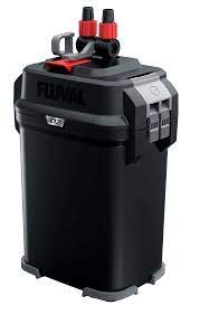
Introduction
Fluval canister filters are an essential part of any aquarium setup. They play a crucial role in maintaining the health and cleanliness of your fish and plants, providing a clear and healthy environment for them to thrive in. In this comprehensive guide, we will explore everything you need to know about Fluval canister filters, from their functions and benefits to the different types available and how to choose the right one for your aquarium.
What are Fluval Canister Filters?
A Fluval canister filter is a type of external filtration system that uses a canister filled with filtration media to clean and filter water in your aquarium. It is a popular choice among aquarium owners due to its efficient and effective filtration, quiet operation, and customizable options.
Functions and Benefits of Fluval Canister Filters
Fluval canister filters have a multi-stage filtration process that removes impurities and contaminants from the water in your aquarium. This includes mechanical filtration, which removes solid waste and debris, biological filtration, which removes toxic nitrogen compounds, and chemical filtration, which removes pollutants and odors. These filters also provide a high flow rate, which helps to improve water circulation and oxygenation, creating a healthy environment for your fish and plants.
Different Types of Fluval Canister Filters
There are several different types of Fluval canister filters available, each designed for specific aquarium sizes and types. These include:
- Fluval 106 Canister Filter
- Fluval 206 Canister Filter
- Fluval 306 Canister Filter
- Fluval 406 Canister Filter
Each of these filters has unique features and capabilities, making it important to choose the right one for your aquarium.
Choosing the Right Fluval Canister Filter
When choosing a Fluval canister filter, it is important to consider the size of your aquarium, the types of fish and plants you have, and your filtration needs. You should also consider the flow rate and filtration capacity of the filter, as well as its ease of maintenance and customization options.
Maintenance and Cleaning
Maintaining and cleaning your Fluval canister filter is an important part of keeping your aquarium healthy and clean. Regular maintenance includes cleaning the filter media, checking the hoses and connections, and cleaning the impeller and motor. It is also important to replace the filter media periodically to ensure its effectiveness.
Conclusion
In conclusion, Fluval canister filters are an essential part of any aquarium setup, providing efficient and effective filtration, improved water circulation and oxygenation, and a healthy environment for your fish and plants. With their customizable options and multi-stage filtration process, Fluval canister filters are a popular choice among aquarium owners. When choosing a Fluval canister filter, it is important to consider the size of your aquarium, your filtration needs, and the types of fish and plants you have. Regular maintenance and cleaning are also essential to keep your filter working effectively and maintain a clean and healthy aquarium environment.
-
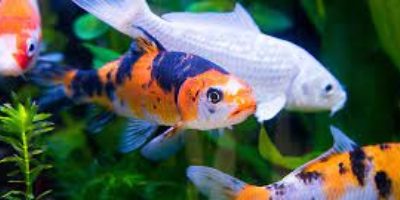
 Exotic1 year ago
Exotic1 year agoChoosing Koi Fish From Petsmart
-

 Dog2 years ago
Dog2 years agoPomeranian Dog Best Bread Information
-
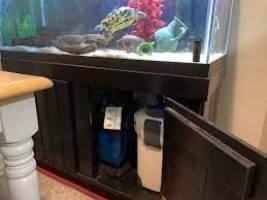
 Turtle2 years ago
Turtle2 years ago8 Best Filters For Turtle Tanks
-
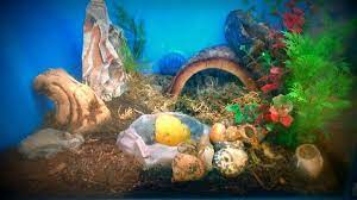
 Turtle2 years ago
Turtle2 years agoPetSmart Crabs – The Right Way to Care For Your Pet Crabs
-
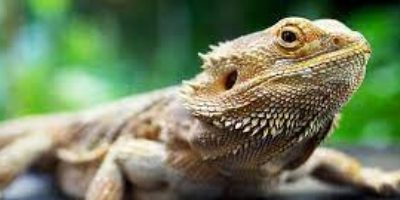
 Exotic10 months ago
Exotic10 months agoBuying a Bearded Dragon For Sale From PetSmart? Read This First
-

 CAT1 year ago
CAT1 year agoBuying a Whisker City Water Fountain
-

 Login10 months ago
Login10 months agoanimal shelters near me
-

 Dog2 years ago
Dog2 years agoLarge Münsterländer And Its Breed In 2022
